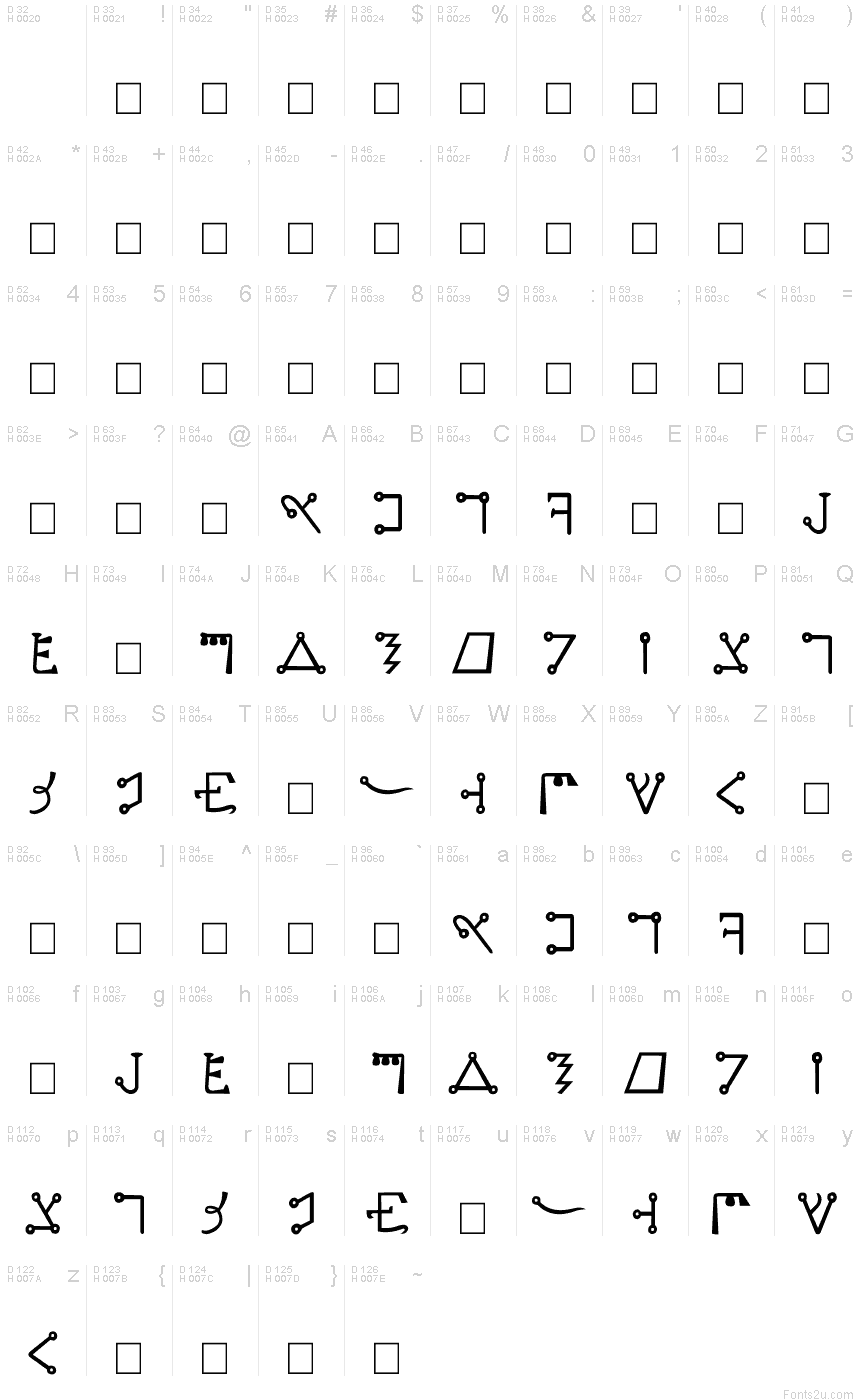Passage du Fleuve
TrueTypeДля власного користування
- Hаголоси (часткові)
- Євро
Passage-du-Fleuve.ttf
Теги
Таблиця символів
Для перегляду різних таблиць символів для цього шрифту, будь ласка, скористайтесь меню, що розкривається.

Основна інформація про шрифт
Про авторські права
© 2002 Daniel U. Thibault. All Rights Reserved.
Сімейство шрифту
Passage du Fleuve
Підсімейство шрифту
Regular
Унікальний ідентифікатор підсімейства
Urhixidur:Passage du Fleuve Regular:2002
Повна назва шрифту
Passage du Fleuve
Ім´я настільної версії
Version 1.00; 2002 August 28
Ім´я поскрипт шрифта
Passage_du_Fleuve
Про виробника
Дизайнер
Daniel U. Thibault
Опис
Passage du Fleuve 2002 1.00
A medieval (circa XIIth-XVth century) occult script derived from Hebrew. The French name means "Passing the River" and is probably an allusion to Deuteronomy, Chapter II, Verses 13-16, where Moses leads Israel across the river Zered into Canaan. With the Celestial and Malachim/Angelic/Royal scripts, it forms the Seraphic family of scripts. It is currently used by some Wiccan practitioners.
Passage du Fleuve is included by Heinrich Cornelius Agrippa in Book III (Ceremonial Magic), Chapter XXX («Another manner of making Characters, delivered by Cabalists») of his De Occulta Philosophia (written in 1509 and first printed in 1533), unfortunately without mentioning any details. Francis Barrett derived the alphabet from Agrippa, along with much of the text of Agrippa's book, and presented it in his «The Magus: A Complete System of Occult Philosophy», published in 1801.
A medieval (circa XIIth-XVth century) occult script derived from Hebrew. The French name means "Passing the River" and is probably an allusion to Deuteronomy, Chapter II, Verses 13-16, where Moses leads Israel across the river Zered into Canaan. With the Celestial and Malachim/Angelic/Royal scripts, it forms the Seraphic family of scripts. It is currently used by some Wiccan practitioners.
Passage du Fleuve is included by Heinrich Cornelius Agrippa in Book III (Ceremonial Magic), Chapter XXX («Another manner of making Characters, delivered by Cabalists») of his De Occulta Philosophia (written in 1509 and first printed in 1533), unfortunately without mentioning any details. Francis Barrett derived the alphabet from Agrippa, along with much of the text of Agrippa's book, and presented it in his «The Magus: A Complete System of Occult Philosophy», published in 1801.
Розширена інформація про шрифт
Платформи підтримуються
ПлатформаКодування
ЮнікодЮникод 1.0 семантика
MacintoshЛатинська
MicrosoftТільки BMP юникод
Деталі шрифту
Створено2002-08-17
Перегляд1
Кількість гліфів248
Одиниць на Em2048
Права вбудовуванняДозволено вбудовування для редагування
Клас групиСимвольні
НасиченістьСередній (нормальний)
ШиринаСередній (нормальний)
Mac стильЖирні
НапрямокТільки гліфи спрямовані зліва направо + нейтральні
ВізерунокPегулярний
ВисотаНе моноширинний